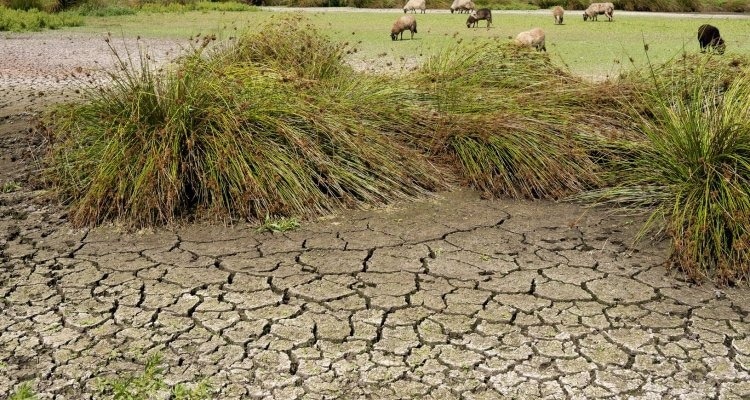Reviewed by Mila PereraOct 31 2022
Few locations around the world have escaped the latest impacts of uncommon floods, droughts, and unseasonal temperatures. These impacts are often ascribed to the role of greenhouse gases, which result in climate change. However, there are other causes. An international research group has discovered an additional drought risk factor; the effects of variations in vegetation cover, particularly forest loss.

Image Credit: Wageningen University & Research
For several parts of the world, rainfall relies on water and land in distant countries. For instance, a moisture molecule that comes into Europe from the Atlantic Ocean might fall as rain or snow and reevaporate into the atmosphere many times before it reaches a rain-fed field in China or Central Asia.
A recently published new study in Heliyon aims to discover the susceptibility of the atmospheric circulation processes, the drivers of “winds,” that retain inland rainfall. Humidity, temperature, and vegetation cover of a region are crucial factors.
The outcome is that high temperatures, the absence of ideal vegetation, and subsequent atmospheric moisture can obstruct the processes that sustain rainfall over land. Adequate moisture returned to the atmosphere retains these processes and makes them resilient.
The scientists compared their theoretical expectations against multiple areas in the Northern Hemisphere, along with North America, Western Europe, and China. They found that present conditions are already close to the threshold where rainfall becomes unpredictable. The research describes the uncertainty in the systems, which may result in floods and droughts.
The study highlights that wetland drainage, forest loss, and other land use modifications intensify these risks while regenerating and conserving wetlands and forests reduces them. In addition, the outcomes emphasize that these large-scale risks need large-scale solutions that acknowledge the interconnection that runs across national continents and borders.
The global study headed by Dr. Anastassia Makarieva at the Technical University of Munich, Germany, established the basic notions that this study is based on. The group discovered a threshold of atmospheric moisture and temperatures where the processes that regulate the dominant wind patterns stop. The authors stress that this is already seen in some recent European summers.
Dr. Anastassia Makarieva underlines that the forests of Russia have a specifically significant function for the Eurasian continent.
The region has been becoming progressively drier, suffering increasingly erratic wind and rain. One important solution is to protect and recover the region’s vast northern forests.
Dr. Anastassia Makarieva, Study Lead Author, Technical University of Munich
“Our research shows that we are close to major disruption of the processes that keep much of the world green, pleasant and habitable,” says Professor Douglas Sheil.
Douglas states that even when the research is technical, the findings and inferences are profound.
The conservationist in me is unsurprised that we have yet more evidence that we disrupt the natural work at our peril,” he says. “But there is also a positive message: we need nature, and we can defend it and achieve many other benefits at the same time. This study is about the reliable rain that we all depend on. But the solution is to maintain and regain forests and wetlands, that also protect biodiversity, store carbon, and provide many other vital goods and services.
Professor Douglas Sheil, Study Co-Author, Wageningen University & Research
Journal Reference
Makarieva. A. M. et al. (2022) Vegetation impact on atmospheric moisture transport under increasing land-ocean temperature contrasts. Heliyon. doi.org/10.1016/j.heliyon.2022.e11173